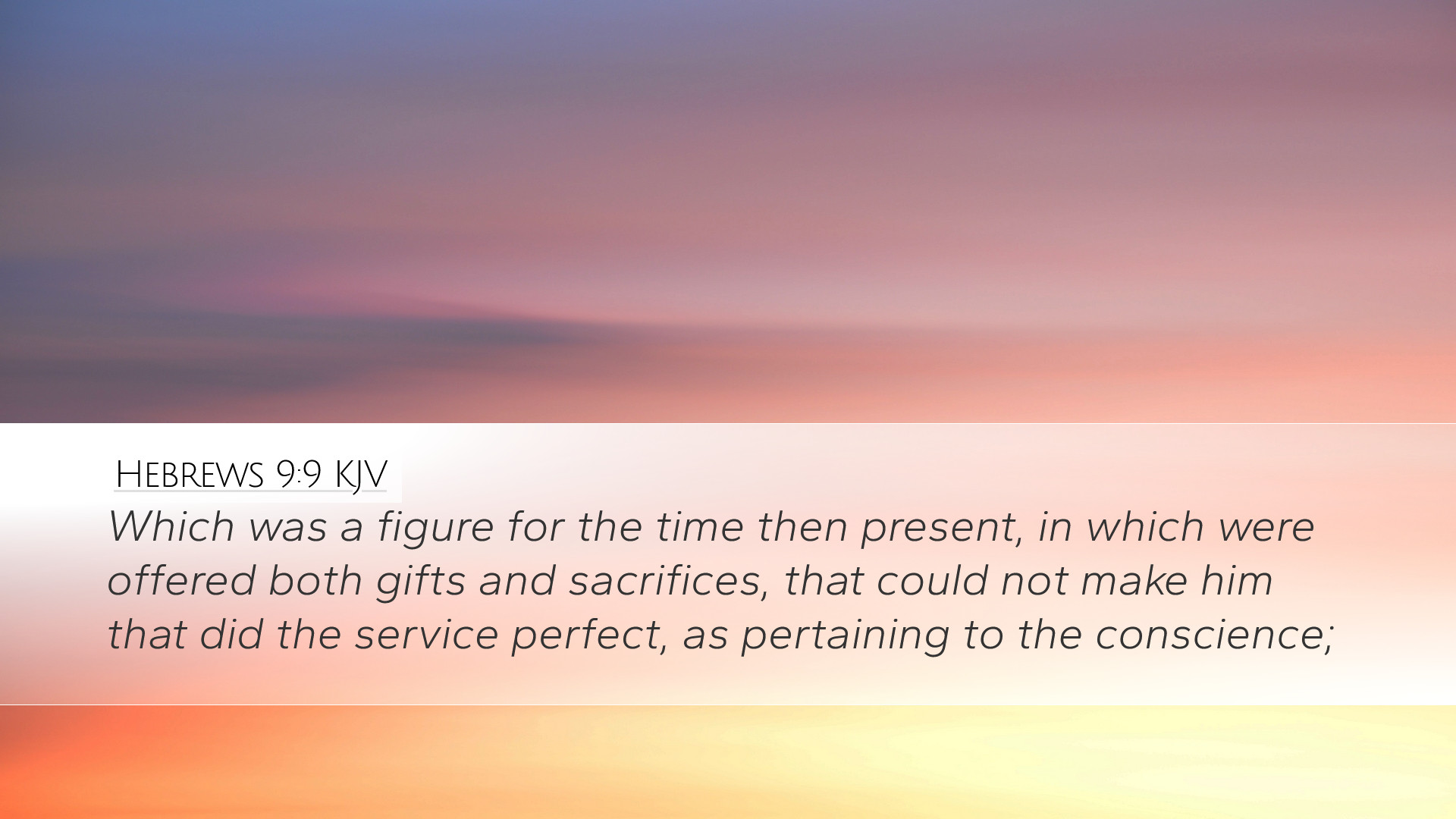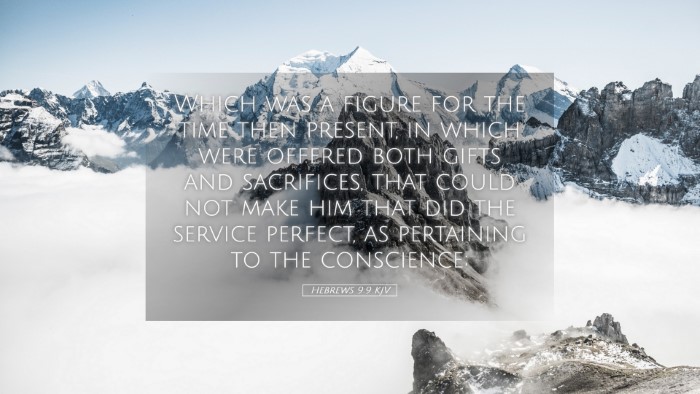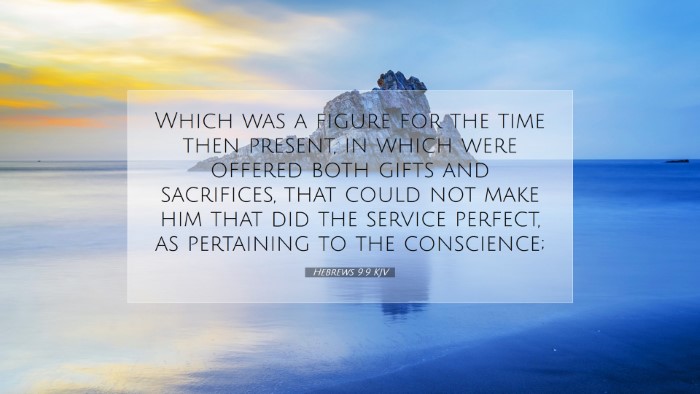Commentary on Hebrews 9:9
Hebrews 9:9 presents a profound exploration of the Old Covenant and its limitations. This verse serves as a pivotal transition into discussing the superior nature of Christ's sacrifice and the New Covenant. The verse reads: "Which was a figure for the time then present, in which were offered both gifts and sacrifices that could not make him that did the service perfect, as pertaining to the conscience."
Exegesis of the Text
The author of Hebrews highlights that the tabernacle and its rituals functioned as a figure, or shadow, of the reality found in Christ. This imagery illustrates that the sacrificial system was but a temporal representation pointing towards an ultimate fulfillment.
Key Terms
- Figure: The term indicates that the Old Covenant practices were not the ultimate reality but merely pointers to what was to come.
- Time then present: This phrase signifies that the practices were relevant to the current covenant but were limited in their efficacy.
- Gifts and sacrifices: Refers to the offerings made under the Law that symbolized thanksgiving, atonement, and dedication to God.
- Perfect: In this context, it speaks to the complete cleansing of sin and the restoration of the conscience which the Old Covenant could not accomplish.
The Old Covenant's Limitations
According to Matthew Henry, this passage emphasizes the insufficiency of the Levitical priesthood and its rituals to provide eternal redemption. The offerings made under the Old Covenant could not achieve a flawless conscience, as they were repeated annually and were contingent upon a temporary system.
Albert Barnes elaborates that though these gifts and sacrifices were commanded by God, they ultimately could not reach the heart or conscience of the worshiper. They fulfilled external obligations but did not bring about internal transformation. This points toward the necessity of a more excellent ministry — that of Christ.
The Fulfillment in Christ
Adam Clarke makes an essential connection between the Old and New Covenants, asserting that Christ's sacrifice represents the true reality that the shadows of the past longed for. Where the old sacrifices were a mere portrayal and could not perfect the worshiper, Christ's atoning death on the cross fulfills and transcends those offerings.
Spiritual Implications
The implications of Hebrews 9:9 reach far beyond historical context. The repetitive nature of the Old Covenant sacrifices serves as a metaphor for the futility of self-righteousness and reliance on works for salvation. Matthew Henry argues that the verse reinforces believers’ reliance on Christ’s sufficiency and the transformative power of His blood.
Moreover, this understanding leads to a profound appreciation of one's conscience before God. Albert Barnes stresses that through Christ, the conscience is purged from dead works to serve the living God. Thus, Hebrews 9:9 becomes a clarion call that emphasizes the need for faith in the ultimate sacrifice of Christ, not merely ceremonial compliance to rituals.
Concluding Reflections
The examination of Hebrews 9:9 illustrates a crucial theological shift from the Old Covenant to the New Covenant instituted by Jesus Christ. This transformation represents the completion of God’s redemptive plan and invites believers into a deeper relationship with Him, one grounded in faith rather than works.
Every pastor, scholar, and student of the Bible is encouraged to delve deeper into this profound truth. The tension between the limited means of the Old Covenant and the complete redemptive work of Christ offers rich insights into God’s character and His plan of salvation. It also challenges individuals to examine the state of their own consciences and the nature of their relationship with God.


